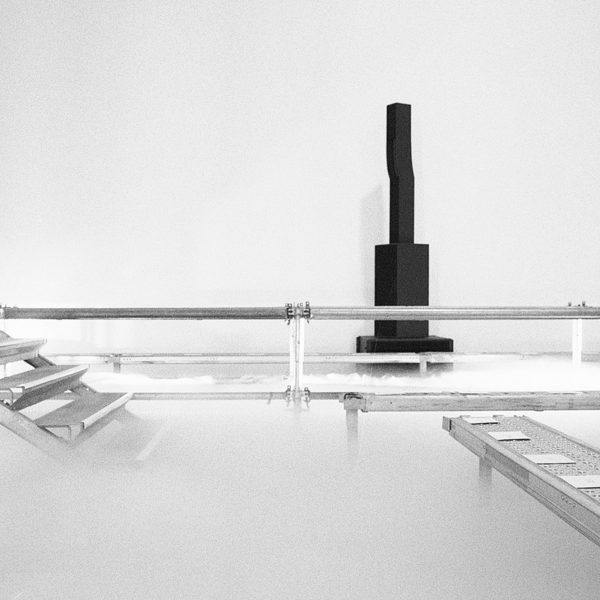[ad_1]
American designer Rick Owens combined architectural shapes with Victorian silhouettes at its Autumn Winter 2023 show, which was presented on a runway built from industrial materials inside a smoke-filled Palais de Tokyo.
Titled Luxor, after the Egyptian city where Owens retreats in the winter months, the show took place inside the Parisian art centre the Palais de Tokyo during Paris Fashion Week.
The show took place in a ground-floor exhibition space of the art centre and saw a three-foot-tall and roughly one-metre-wide metal scaffolding system built as the show’s runway.
Before the show began, the interior of the exhibition space was flooded with low-lying smoke that covered the floor and submerged the feet of the elevated, industrial runway that zigzagged between the exposed concrete columns and walls of the Palais de Tokyo.
Single rows of seating, similarly constructed from the same perforated metal panels used to build the elevated centrepiece, flanked each side of the industrial metal runway and were reserved for the show’s guests and spectators.
The use of industrial and construction materials complemented the raw and brutal interior of the Palais de Tokyo, which was renovated in 2012 by French architecture studio Lacaton & Vassal.
Architectural silhouettes that have become synonymous with the brand were given a Victorian twist, which Owens explained reflected the primness of online judgment.
“This collection is about reduced architectural shapes with a whiff of sleazy seventies pseudo-mysticism,” said Rick Owens in the show notes.
“Sharp shoulders and high, tight waists flare to the ankle recalling an almost Victorian silhouette – a reflection of a primness we see in a prevalence of current online judgement.”
Recycled Pirarucu fish skins were pigmented in inky hues via low-impact tanning processes and were used to clad oversized jackets throughout the collection.
Native to the Amazon and Essequibo basins of South America, Pirarucu is the world’s largest-scaled freshwater fish and can grow up to three metres long. Owens sourced the skins from indigenous communities in Brazil.
Doughnut shapes were translated into wearable, black sequin-embroidered duvets – as dubbed by Owens. Vogue reported that the puffer pieces were “wearable soft furnishings” into which models were inserted within.
“That’s me trying to reduce garments to the simplest shape I could,” Owens told Vogue. “They’re literally duvet donuts. They’re like the fog machine of clothes—dumb and super-simple.” Owens told Vogue.
Flight jackets were constructed using Global Recycled Standard certified recycled polyamide and pigmented using techniques that allow natural pigments to be applied to synthetic fibres. Black-hued jackets were dyed using bamboo charcoal and greens using olive waste.
In 2018, Owens inserted a flaming pyre in the drained fountain of the Palais de Tokyo for its Spring Summer 2019 womenswear show, which drew influences from drew on influences from two hypothetical buildings – the Tower of Babel and Russian architect, Vladimir Tatlin’s model of a constructivist tower.
More recently, Rick Owens designed a monolithic, modular sofa system for Carpenters Workshop Gallery that was constructed from plywood and clad in French wool army blankets.
The photography is courtesy of Rick Owens.
[ad_2]

